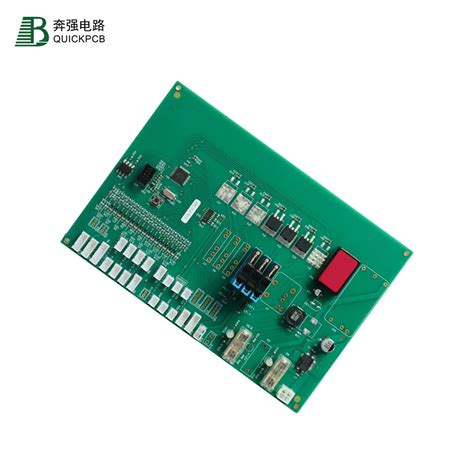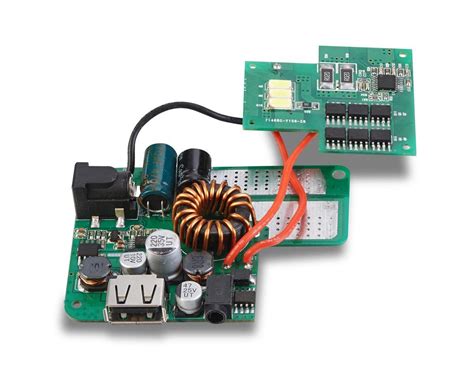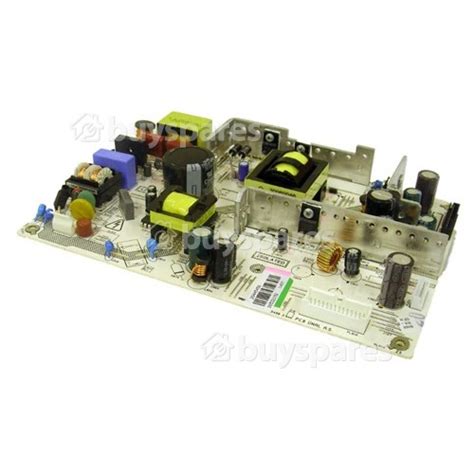Innovative Approaches to Power Supply PCB Assembly

Key Takeaways
In today’s rapidly evolving electronics landscape, a deep understanding of power supply PCB assembly (PCBA) is essential for engineers and manufacturers aiming to create efficient, reliable, and high-performing systems. The principles of power supply design mandate careful planning, including a thorough analysis of the components chosen for the PCB assembly. Utilizing advanced techniques such as surface mount technology (SMT) can significantly enhance the density and performance of power supply circuits. Additionally, employing innovative materials—like high-temperature solders and flexible substrates—can improve reliability in demanding environments.
Furthermore, thermal management is crucial in sustaining the longevity and effectiveness of power supply units. Engineers should incorporate features like thermal vias or heat sinks to dissipate heat effectively. As we move toward an era where smart technologies are integrated into daily electronics, exploring options like intelligent monitoring systems within power supplies will offer unprecedented levels of efficiency.
When it comes to quality control during PCBA, implementing rigorous inspection methods—such as Automated Optical Inspection (AOI)—is vital in guaranteeing that all assemblies meet strict performance criteria. Keeping abreast of future trends will ensure that professionals remain competitive in their designs and manufacturing approaches.
"Innovation in power supply PCB assembly is not just about adopting new technologies; it’s about redefining how we think about efficiency and system integration."

Understanding the Fundamentals of Power Supply PCB Design
The design of power supply PCBs (Power Supply PCB Assembly) is a crucial aspect that underpins effective electrical performance in various devices. At its core, this process involves converting and regulating electrical power to support the functionality of electronic circuits. Understanding the basic principles of PCB assembly is essential for professionals in the field.
Key components of power supply PCBA include capacitors, inductors, and transformers, each serving a specific function in voltage regulation and ripple reduction. For instance, capacitors filters out voltage spikes and provides stability to the output, while inductors help to smoothen the current flow, reducing electromagnetic interference.
A fundamental understanding of switching topologies (such as buck, boost, and flyback converters) also plays an essential role in designing efficient power supply circuits. These topologies dictate how energy is converted and stored within the system. Designers must consider factors such as thermal performance, efficiency at various load conditions, and component selection to ensure reliability.
Additionally, creating effective layout strategies during pcb assembly is vital for minimizing issues like parasitic capacitance and inductance, which can adversely affect circuit performance. Prioritizing these aspects not only helps enhance the overall functionality but also leads to increased production efficiency during the PCBA process.
In summary, a solid foundation in the fundamentals of power supply PCB design contributes significantly to creating reliable and efficient electronic systems capable of meeting modern technological demands.

Best Practices for Efficient Power Supply PCB Assembly
In the realm of power supply PCB assembly, several best practices can significantly enhance the efficiency and effectiveness of the process. First and foremost, thorough planning during the initial design phase can alleviate many complications down the line. This includes ensuring that the PCB layout facilitates optimal flow of electrical signals while minimizing interference. Employing multi-layer boards where necessary can also optimize space and provide improved functionality.
Additionally, selecting quality components is critical. Utilizing components with a proven track record for reliability not only boosts performance but also minimizes failures during operation. The integration of automated systems for PCBA can streamline assembly, reduce human error, and improve output consistency. Furthermore, adopting surface mount technology (SMT) over traditional through-hole techniques often leads to superior results in terms of size efficiency and component placement.
Moreover, meticulous soldering techniques are essential for establishing strong connections that withstand thermal stress and operational fatigue. Insisting on temperature-controlled soldering processes can further enhance joint integrity by preventing overheating and related damages. Lastly, implementing a rigorous quality assurance protocol throughout the assembly process ensures that every unit meets stringent standards before reaching the market.
By adhering to these best practices in power supply PCB assembly, manufacturers can bolster both reliability and performance while effectively managing costs throughout production cycles. The careful implementation of such strategies ultimately positions businesses to thrive in a competitive landscape while delivering innovative power supply solutions that meet modern demands.

Innovative Materials and Components in Power Supply Circuits
In the realm of power supply PCB assembly, the integration of innovative materials and components plays a pivotal role in enhancing performance and efficiency. Advances in component technology, such as surface-mount devices (SMDs), enable designers to optimize space on PCBs while simultaneously improving electrical performance. Furthermore, new materials such as high-frequency laminates and thermally conductive substrates are being used to manage heat dissipation more effectively, which is critical for maintaining the longevity and reliability of power supply circuits.
Additionally, advancements in capacitor technology, including the use of ceramic and polymer capacitors, provide increased efficiency and stability under varying load conditions, helping to maintain a consistent output. The choice of PCB substrates is also evolving; using materials with lower dielectric loss can significantly enhance power efficiency in high-frequency applications.
Moreover, as environmental concerns rise, many manufacturers are shifting towards eco-friendly alternatives without compromising the quality of the assembly. The utilization of these innovative materials not only simplifies pcba processes but also contributes to the overall sustainability goals within the electronics manufacturing industry. Such transformations mark a significant leap forward in the design philosophy of power supply circuits, where every component is selected for its ability to improve both performance and environmental footprint. Overall, these advancements illustrate how modern trends in material science are significantly shaping the future landscape of power supply PCB assembly.
Advanced Techniques for Soldering in PCB Assembly
In the realm of power supply PCB assembly (PCBA), soldering techniques play a critical role in determining the reliability and performance of the final product. One of the most innovative approaches is the adoption of wave soldering, which is efficient for high volumes and ensures a uniform coating on multiple components. This technique allows for a detailed inspection process, minimizing defects that could compromise power supply circuits. Another noteworthy method is reflow soldering, which utilizes heat to melt solder paste applied to connection points before cooling it down, resulting in strong, resilient joints.
Moreover, incorporating selective soldering can target specific areas that require precision without affecting surrounding components, which is especially beneficial in densely packed PCB assemblies. Assembling PCBA using these advanced techniques not only boosts efficiency but also enhances overall reliability due to better thermal and mechanical stability of the connections made.
Utilizing state-of-the-art tools such as automated optical inspection (AOI) systems further refines soldering processes by identifying anomalies early in production. The integration of such technology allows engineers to adhere closely to high-quality standards while maintaining optimal performance within every aspect of design and manufacturing in power supply circuits. As we continue to innovate in this field, these advanced soldering techniques will underpin future developments, ensuring that power supply solutions meet rigorous demands for efficiency and reliability.
Enhancing Reliability Through Thermal Management Strategies
Effective thermal management is critical in ensuring the reliability of power supply PCB assembly. High temperatures can adversely affect the performance and lifespan of electronic components, making it essential to implement strategies that mitigate thermal risks. One innovative approach is the use of heat sinks, which increase surface area for heat dissipation, effectively reducing localized hotspot formation. Additionally, utilizing thermal interface materials (TIMs) can enhance heat transfer between components and heat spreaders or sinks, ensuring that excessive heat does not accumulate.
Another strategy involves strategic PCB layout design. By optimizing component placement and routing, designers can facilitate improved airflow and minimize thermal gradients across the board. For instance, placing high-power components away from sensitive areas can help maintain a more stable temperature profile throughout the PCBA.
Moreover, incorporating thermal monitoring technologies within power supply circuits allows for real-time tracking of temperatures. This proactive approach enables early detection of potentially harmful heat build-up, allowing for timely interventions to prevent component failure. By weaving together these thermal management strategies into the design process, engineers can significantly enhance the performance and reliability of power supply PCB assembly, ultimately leading to more robust electronic devices that can withstand varying operational conditions.
Integrating Smart Technologies into Power Supply Solutions
In the rapidly evolving field of electronics, the integration of smart technologies into power supply PCB assembly (PCBA) has emerged as a game-changer. By leveraging advancements such as IoT connectivity and intelligent monitoring systems, manufacturers can enhance the reliability and efficiency of power supply circuits. These technologies allow for real-time data collection and analysis, enabling proactive maintenance and optimization of power delivery systems. For instance, incorporating smart sensors into PCB designs can facilitate temperature monitoring, voltage regulation, and current flow analysis, significantly minimizing the risks associated with overheating and overload conditions. Furthermore, the integration of AI algorithms can assist in fault detection, thereby improving overall system performance and reducing downtime in critical applications. This intelligent approach not only enhances the safety and longevity of electronic devices but also contributes to broader energy-saving initiatives by optimizing power consumption patterns. As the demand for more efficient and reliable power supply solutions continues to grow, adopting these innovative techniques in PCB assembly processes is essential for staying competitive in today’s market.
Quality Control Measures in Power Supply PCB Assembly
Quality control measures play a crucial role in ensuring the reliability and efficiency of pcb assembly for power supply circuits. During the pcba process, implementing thorough inspection techniques and testing protocols helps identify potential defects at various stages of production. One essential practice is conducting regular inspections of raw materials and components prior to assembly. This ensures that only high-quality, compliant parts are used, reducing the risk of failure in the final product. In addition, utilizing automated optical inspection (AOI) systems can significantly enhance the accuracy of defect detection by providing real-time monitoring throughout the assembly process.
Another important aspect is adhering to strict soldering standards. Evaluating solder joint quality through methods such as X-ray inspection can detect hidden faults, ensuring optimal connectivity and electrical performance. Moreover, performing functionality tests on each power supply unit post-assembly guarantees that all specifications are met before reaching the market.
To further bolster quality assurance, adopting a continuous feedback loop involving design engineers, assembly technicians, and quality assurance teams fosters a culture of collaboration and improvement. This approach not only addresses issues swiftly but also promotes innovative solutions for enhancing the pcba process. By prioritizing these quality control measures, manufacturers can significantly increase the reliability and performance of power supply circuits while minimizing costs associated with repairs and returns.
Future Trends in Power Supply Circuit Design and Manufacturing
As the demand for efficient and reliable power supply solutions continues to grow, several innovative trends are emerging in power supply PCB assembly. One of the most notable trends is the integration of smart technologies into power supply circuits. This involves the use of digital controls and enhanced monitoring systems, allowing for real-time data analysis and optimization of performance. Moreover, as the size of electronic devices shrinks, miniaturization of components has become crucial. This pushes manufacturers to adopt more compact and effective layouts in their PCB assembly processes.
Additionally, a shift towards environmentally friendly materials is seen as a vital trend in PCB manufacturing. The adoption of green materials not only ensures compliance with global environmental standards but also enhances the sustainability of electronic products. These materials often exhibit superior thermal properties, which are critical for effective cooling in power systems.
Furthermore, advancements in automated assembly technologies are revolutionizing the efficiency of PCBA processes. High-precision robotics are increasingly being utilized to improve accuracy during soldering and component placement, thereby reducing waste and enhancing overall product quality. This level of automation also allows for more complex designs without compromising on reliability.
In terms of design methodologies, simulation tools that allow engineers to predict performance characteristics early in the design phase are becoming increasingly popular. This proactive approach enables potential issues to be identified and rectified before physical production begins, ultimately leading to reduced time-to-market for new designs.
Collectively, these trends underscore a significant transformation in power supply circuit design and manufacturing practices, which aim not only at enhancing efficiency but also at meeting consumer demands for sustainable and high-performance solutions.

Conclusion
In summary, the pcb assembly process for power supply systems has evolved significantly, incorporating innovative techniques and best practices that bolster efficiency and performance. As manufacturers focus on optimizing pcba processes, they are increasingly adopting advanced materials that not only enhance the durability of components but also improve electrical performance. The integration of smart technologies into power supply solutions empowers designers to monitor and control circuit behavior in real-time, leading to more responsive systems. Additionally, the emphasis on thermal management strategies plays a crucial role in ensuring that power supplies operate reliably under varying conditions, reducing the risk of overheating and component failure. As we move towards a future that embraces cutting-edge manufacturing methods, it becomes essential for professionals in the field to stay informed about emerging trends and continuously refine their practices in pcb assembly. This will ultimately establish a foundation for developing power supply solutions that are not only efficient but also capable of meeting the demands of an increasingly technology-driven world.

FAQs
What is PCB assembly and why is it important?
PCB assembly, or Printed Circuit Board Assembly, is the process of soldering electronic components onto a PCB to create a functional circuit. This process is crucial because it determines the reliability and performance of the electronic device, making efficient PCBA (Printed Circuit Board Assembly) essential in modern electronics.
What are some common challenges in power supply PCB assembly?
Common challenges include thermal management, ensuring proper heat dissipation, achieving compact layouts while maintaining performance, and managing signal integrity. Overcoming these issues is vital for enhancing the overall efficiency and reliability of power supply circuits.
How can innovative materials improve power supply PCB assembly?
Innovative materials can significantly improve thermal conductivity, reduce weight, and enhance durability. The use of advanced substrates and components in pcb assembly can lead to better performance in high-frequency applications, which are often found in power supply circuits.
What role does soldering technique play in PCB assembly?
Soldering techniques directly affect the quality of PCBA. Advanced methods, such as automated soldering and laser soldering, offer precise control, reducing the chances of defects while enhancing connection strength and overall reliability.
How can I ensure quality control during PCB assembly?
Implementing rigorous quality control measures such as inspections at various stages of production will help identify potential issues early. Utilizing automated optical inspection systems (AOI) can aid in detecting faults that might compromise the integrity of the pcb assembly, ensuring a high standard for power supply circuits.






